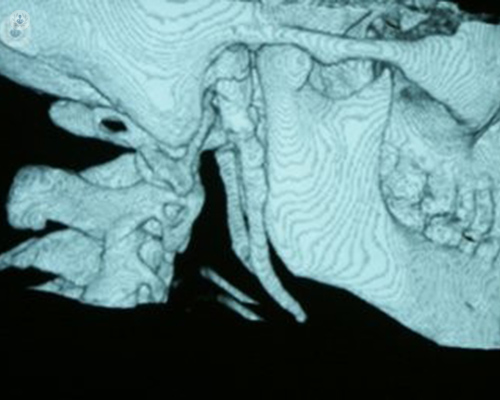Eagle Syndrome: a close-up of this rare pathology
Written by:
Anna, a patient suffering with multiple different symptoms, visited several specialists without finding a correct diagnosis. After finding the right doctor, she was finally diagnosed with the rare condition Eagle's Syndrome and operated on, finally putting an end to the pain she was feeling.

Often patients who are distressed after suffering from diagnostic failures, and after having completed courses of medication to no avail, will turn to an ENT specialist to find a remedy for the numerous pains they are experiencing.
There are symptoms that, due to their low frequency of occurrence, may be unknown even to the doctor. A doctor may dismiss them, or not be able to make a connection between the symptoms. Without previous experience, Eagle Syndrome is difficult to recognise.
What is Eagle Syndrome?
Everyone has a tusk-shaped bone of 4-5cm in length on each side of the base of the skull. . They are called styloid processes and, with the stylo-hyoid ligament, attach the skull to the hyoid bone in the neck. When one or both ligaments ossify or calcify, they give rise to Eagle Syndrome. It is a very rare disorder.
What are the symptoms of Eagle Syndrome?
The diagnosis of a patient with Eagle Syndrome is based on the presence of a series of symptoms to which it’s difficult to find an explanation.
Common symptoms include:
- Painful sensations in the throat that are described as intense stabbing pains, dull aching, or intense burning sensations of varying duration and in various locations.
- Earache, a plugged ear sensation, or ringing in the ear
- Excessive production of saliva, difficulty speaking or swallowing.
- Limited neck movement
- Noise from the temporomandibular joint (TMJ)
- Sensation of a foreign body at the back of the mouth which forces frequent swallowing
- Dizziness and even temporary loss of consciousness.
Surgical options for Eagle syndrome
The only treatment for Eagle Syndrome is surgery. It consists of the removal of the ligament that is ossified, and can be done in two ways:
- Through the mouth using robotic surgery to access and remove the elongated styloid process.
- External surgery. The styloid process is reached via an incision in the neck.
Eagle Syndrome: a real case
Anna, a patient, explains it this way: "I had just had a son. For more than three years I had been to see countless specialists who gave me lots of medication. I was very nervous and stressed with having a new baby. Many visits were depressing and I learned that you should be careful telling the doctor about your state of mind, as it was leading them to a diagnosis of depression or anxiety."
"It is very frustrating to see that nobody understands you and think that you may have to spend the rest of your life with that unbearable pain. I ended up thinking I had lymphoma. It was not until I was diagnosed and operated on that I was able to go back to being the person I had been before: a healthy and happy person."


